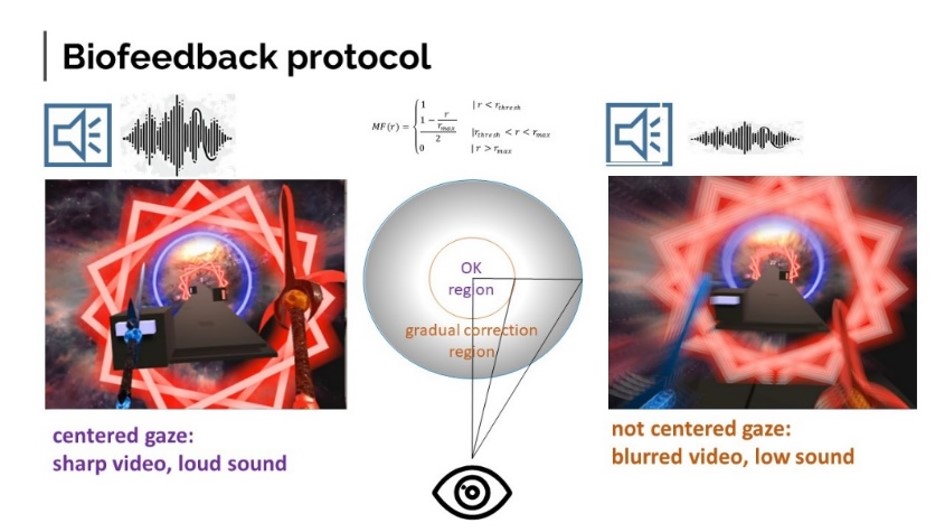Current exposure-based therapies for PTSD, phobias, and ADHD lack personalization, real-time safety monitoring, and patient agency. This technology introduces a dynamic virtual reality (VR) algorithm that creates a closed-loop perceptual (CLP) exposure system by integrating real-time ocular kinematics and physiological signals. The system continuously adapts visual stimuli based on the user’s gaze stability and emotional state, enabling individualized control over the pace and content of exposure. This active engagement facilitates neural plasticity and behavioral change, under therapist supervision, in a safe and immersive environment.
- Treating ADHD with biofeedback during gamified training sessions
- Treating PTSD with AI-assisted triggering environments that recreate the specific traumatic episode while monitoring patient distress for safety
- Treating phobias using simulated exposure therapy
- Medication-free treatment, preventing common side effects such as insomnia, weight loss, and increased heart rate
- Highly personalized 3D VR experience that is immersive and enjoyable for a range of age groups
- Real-time engagement of eyes, legs, and hands with direct feedback
- Enhanced signal reliability & low variability
The system has been validated for ADHD using an eye-tracking-enabled VR headset that modulates visual clarity based on gaze stability. Development of a gradual, safe exposure protocol is underway for PTSD and phobia applications.

Use of an integrated eye tracker in a VR headset to monitor gaze stability and dynamically adjust image clarity based on gaze dynamics.
This closed-loop feedback method has been validated in individuals with ADHD.

Dr. Vered Pardo Yissar

